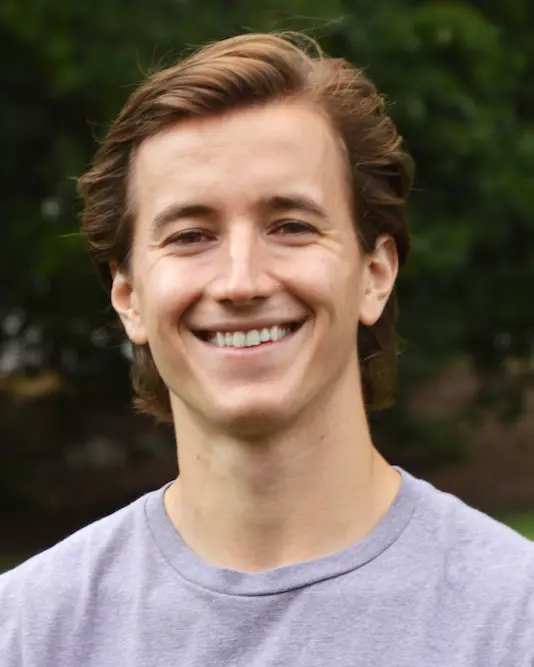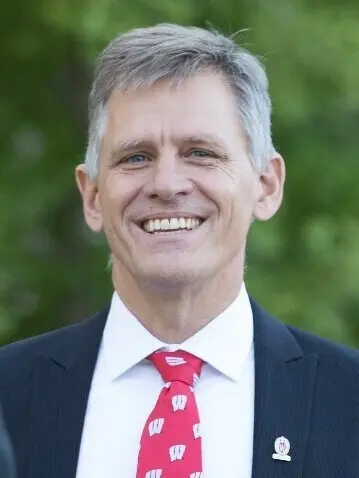University of Wisconsin-Madison engineers harnessed the power of high throughput computing to run thousands of simulations, leading to a better understanding of shear wave propagation in tendons and ligaments.
Using high throughput computing allowed Mechanical Engineering Professor Darryl Thelen and Jonathon Blank, a former mechanical engineering PhD student and current postdoctoral researcher at the University of Pennsylvania, to greatly expand the scale of their research using noninvasive measurements of tendons and ligaments.
 Jonathon Blank
Jonathon Blank
The researchers shared their results in a paper published in the November 2023 issue of the Journal of the Mechanical Behavior of Biomedical Materials.
Using noninvasive sensors called shear wave tensiometers, the researchers applied high throughput computing to study tendon structure and function. Currently, research in this field is hard to translate because most assessments of tendon and ligament structure-function relationships are performed on the benchtop in a lab. To translate the benchtop experiments into studying tendons in humans, the researchers use tensiometers as a measurement tool, and this study developed from trying to better understand these measurements and how they can be applied to humans.
“Tendons are very complex materials from an engineering perspective,” Blank says. “When stretched, they can bear loads far exceeding your body weight, and interestingly, even though they serve their roles in transmitting force from muscle to bone really well, the mechanisms that give rise to injury and pathology in these tissues aren’t well understood.”
In living organisms, researchers have used tensiometers to study the loading of muscles and tendons, including the triceps surae, which connects to the Achilles tendon. Since humans are variable regarding the size, stiffness, composition, and length of their tendons or ligaments, Blank says it’s challenging to use a model to accurately represent a parameter space of human biomechanics in the real world.
“For my field, high throughput computing is very important because people are extremely variable — so our models should be too,” Blank says. “The automation and capacity enabled by high throughput computing makes it easy to understand whether our models are useful, and if they are, how best to tune them to inform human biomechanics. Throughout my time at UW-Madison, I ran tens of thousands of simulations—probably even hundreds of thousands.”
 Darryl Thelen
Darryl Thelen
With Thelen and Josh Roth, an assistant professor of mechanical engineering and orthopedics and rehabilitation, Blank developed a pipeline for simulating shear wave propagation in tendons and ligaments with high throughput computing, which Blank and Thelen used in the Journal of the Mechanical Behavior of Biomedical Materials paper.
Blank says high throughput computing enabled the team to further explore the mechanistic causes of changes in wave speed. “The advantage of this technique is being able to fully explore an input space of different stiffnesses, geometries, microstructures, and applied forces,” he says. “The advantage of the capabilities offered by the Center for High Throughput Computing (CHTC) at UW-Madison is that we can fill the entire input space, not just between two data points, and thereby study changes in shear wave speed due to physiological factors and the mechanical underpinning driving those changes.”
It wasn’t challenging to implement, Blank says, since CHTC facilitators were readily available to help him and answer his questions during office hours and numerous one-on-one meetings. “For a lot of modeling studies, you’ll have this sparse input space where you change a couple of parameters and investigate the sensitivity of your model that way,” he says. “But it’s hard to interpret what goes on in between, so the CHTC quite literally saved me a lot of time. There were some 1,000 simulations in the paper, and high throughput computing by scaling out the workload turned a couple thousand hours of simulation time into two or three hours of wall clock time. It’s a unique tool for this kind of research.”
The next step from this paper’s findings is providing subject-specific measurements of wave speeds. “This involves understanding if when we use a tensiometer on someone’s Achilles tendon, for example, can we account for the tendon’s shape, size, injury status, etcetera — all of these variables matter when measuring shear wave speeds,” Blank says.
Researchers from the lab can then use wearable tensiometers to measure tension in the Achilles and other tendons to study human movement in the real world.
Darryl Thelen is the John Bollinger Chair of Mechanical Engineering and Bernard A. and Frances M. Weideman Professor.
A version of this story was originally published by the Center for High Throughput Computing.